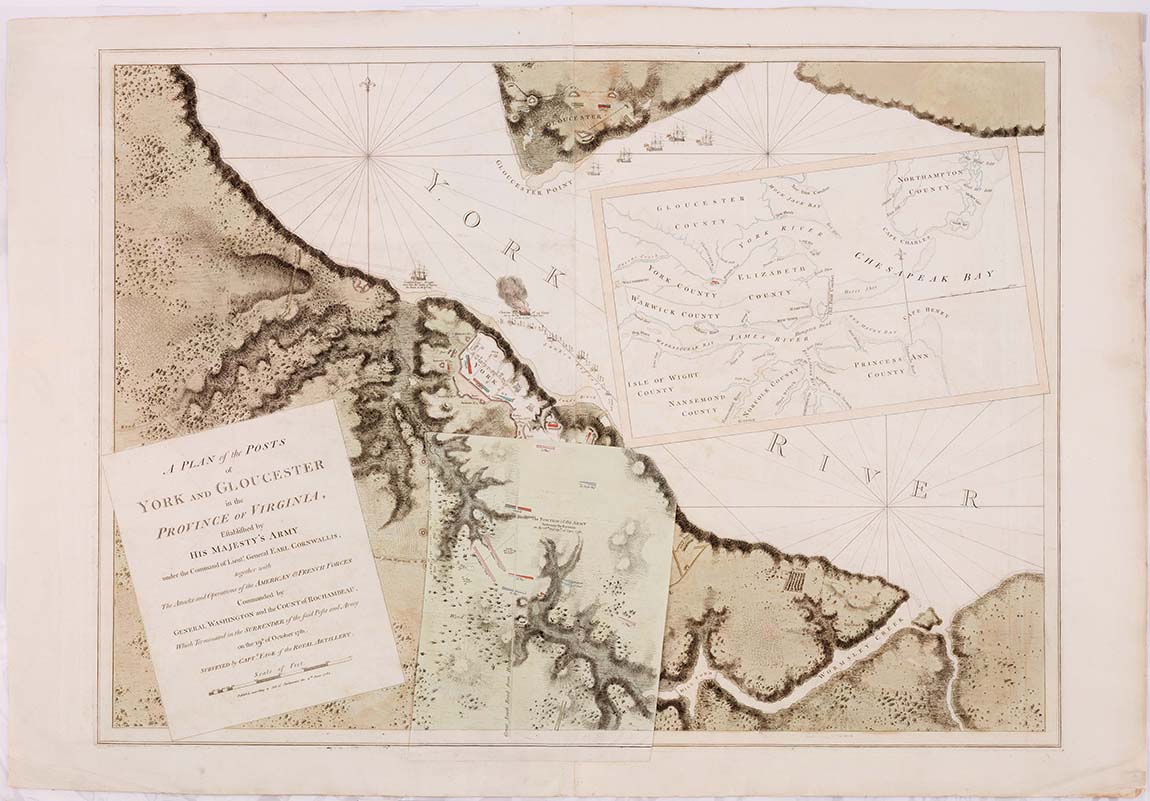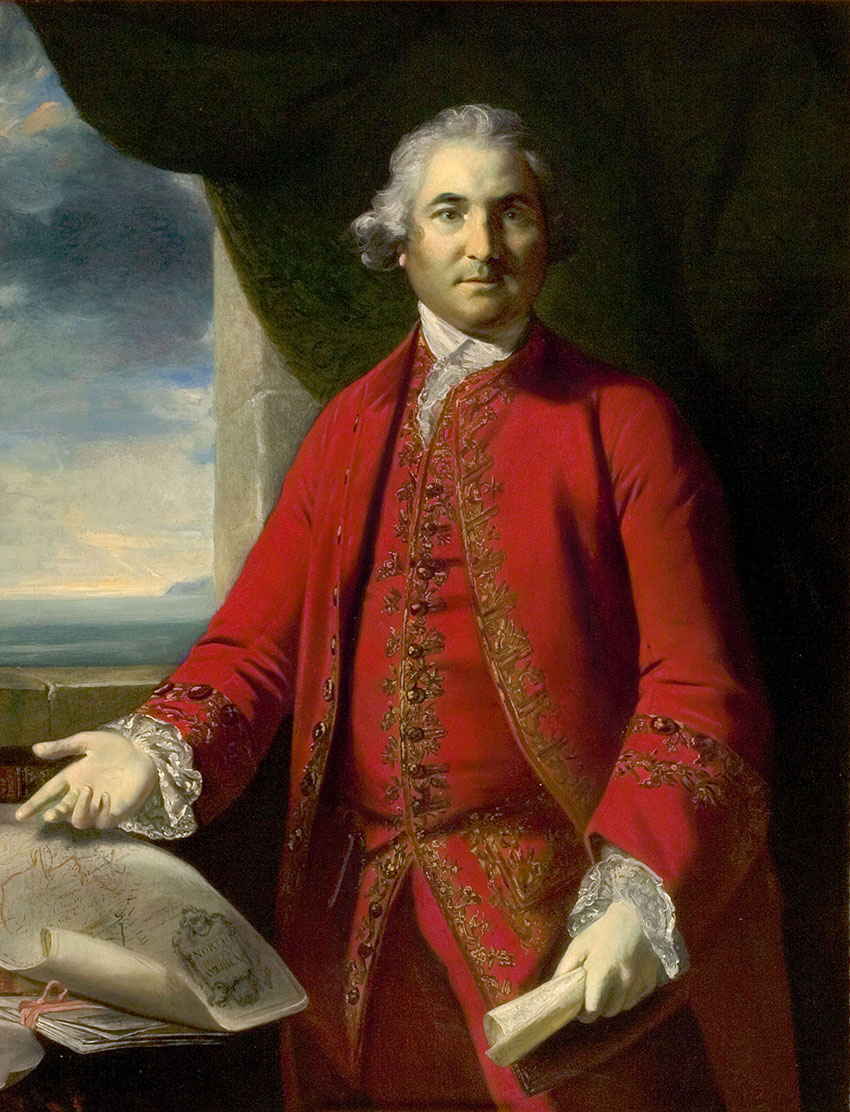WILLIAMSBURG, VA. — Marking the first collaboration between the Art Museums of Colonial Williamsburg and the Norman B. Leventhal Map Center at the Boston Public Library, “We Are One: Mapping America’s Road from Revolution to Independence” will frame the American Revolution from its beginnings in Boston to its climax at Yorktown. The exhibition opens March 6, at the DeWitt Wallace Decorative Arts Museum, one of the Art Museums of Colonial Williamsburg.

A Plan Of The Posts Of York And Gloucester In The Province Of Virginia, Edward Fage, cartographer; engraver unknown; Joseph Frederick Wallet Des Barres, publisher; London, June 4, 1782, black and white line engraving with period color. Colonial Williamsburg Museum Purchase, partially funded by The Friends of Colonial Williamsburg Collections Fund.
The exhibition will highlight the critical role that the Southern colonies — particularly Virginia — played at the end of the Revolution. More than 30 objects from Colonial Williamsburg’s collections will be included in the exhibition, which were not shown when the exhibit opened at the Boston Public Library in 2015. The exhibition there emphasized the important events that took place in that city at the start of the war. In all, some 90 objects will be displayed here. “We Are One” will be on view through January 29.

“Portrait of Isaac Barré” by Sir Joshua Reynolds, London, 1766, oil on canvas, Colonial Williamsburg Museum Purchase, all images courtesy of the Art Museums of Colonial Williamsburg.
“Colonial Williamsburg is a living history museum that tells the story of a Revolutionary city. This exhibit uses objects that tell the story of how this country evolved into a society that values liberty,” said Margaret Beck Pritchard, senior curator and curator of prints, maps and wallpaper at the Art Museums of Colonial Williamsburg. “There is no exhibition that we could mount in the Art Museums of Colonial Williamsburg that would more directly reflect the primary mission of the foundation and support of all the programming in the historic town.”
Using geographic and cartographic perspectives, the exhibit traces the American story from the French and Indian War to the creation of a new national government and the founding of Washington, D.C., as its capitol. When tensions between Britain and the American colonies erupted into war, cartographers and other witnesses depicted military campaigns, battles and their settings. At a time when photography was nonexistent and art was romantic and stylized, these maps and drawings provide the most accurate pictorial representations of the North American colonies and bring the long, bloody struggle for independence to life. The exhibition’s title comes from Benjamin Franklin’s early design for a note of American currency containing the phrase “We Are One,” which presaged the words “E Pluribus Unum” found on the United States seal and on all US coins.
Many of the objects from Colonial Williamsburg’s collection are on view for the first time or are rarely exhibited. One such example is a rare map of the battle of Yorktown by Joseph Frederick Wallet des Barres that retains an overlay attached to it to show troop positions at various times during the engagement. Other objects include two important manuscript maps attributed to British officer John Graves Simcoe, a rare pastel portrait of two British soldiers from the 62nd regiment of foot by Charles Forrest and two jewel-like portrait miniatures of the Battle of Yorktown by Louis-Nicholas Van Blarenberghe after drawings made on the spot by Charles-Louis Berthier and Alexandre Berthier.

Articles de la Capitulation (Articles of Capitulation), Yorktown, Va., 1781, ink on laid paper, Special Collections, John D. Rockefeller Jr Library, Colonial Williamsburg Foundation.
“We Are One” also features rare manuscript maps, printed maps and watercolors from the collection of map collector Richard H. Brown, some of which were not on view at the Boston Public Library. Highlights include a manuscript plan of the Battle of Saratoga by Polish Revolutionary war hero Tadeusz Kosciusko, five rare watercolors of Boston by British artist and soldier Richard Williams and a manuscript map by Charles Blaskowitz of New York Island.
Other notable objects in the exhibition from the Colonial Williamsburg collections include Matthew Carey’s illustration of a slave ship that was foundational to the antislavery movement and a French copy of The Articles of Capitulation printed on ship in the Yorktown Harbor following the surrender of British troops.
The Art Museums of Colonial Williamsburg are at the intersection of Francis and South Henry Streets. For program information, 757-220-7724 or www.colonialwilliamsburg.com/do/art-museums.

